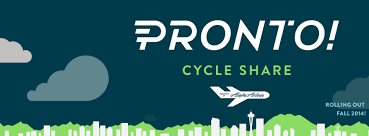Difference between revisions of "G7 Project Introduction"
(Created page with "<div style=background:#00514c border:#A3BFB1> 250px <font size = 5; color="#FFFFFF">Pronto Bike Share</font> </div> <!--MAIN HEADER --> {|style...") |
|||
| Line 26: | Line 26: | ||
= Background = | = Background = | ||
| + | |||
| + | [[image:Pronto_G7.png|right]] | ||
Pronto Cycle Share, branded as Pronto!, was a public bicycle sharing system in Seattle, Washington, that operated from 2014 to 2017. The system, owned initially by a non-profit and later by the Seattle Department of Transportation, included 58 stations in the city's central neighbourhoods and above 500 bicycles. | Pronto Cycle Share, branded as Pronto!, was a public bicycle sharing system in Seattle, Washington, that operated from 2014 to 2017. The system, owned initially by a non-profit and later by the Seattle Department of Transportation, included 58 stations in the city's central neighbourhoods and above 500 bicycles. | ||
Revision as of 21:46, 15 October 2017
|
|
|
|
|
Contents
Background
Pronto Cycle Share, branded as Pronto!, was a public bicycle sharing system in Seattle, Washington, that operated from 2014 to 2017. The system, owned initially by a non-profit and later by the Seattle Department of Transportation, included 58 stations in the city's central neighbourhoods and above 500 bicycles.
Bike-sharing is a short distance transportation for people to make their life more convenient. When people use shared-bike, they can borrow and return bikes at any stations in the service station. Some stations have too many incoming bike and get jammed without enough docks for upcoming bikes, while some other stations get empty quickly and lack enough bikes for people to check out.
Objective
we want to re-dispatch bikes at stations to handle the surge in usage experienced during rush-hours. Our goal is to optimize resource allocation, so that users are never too far from either a bike or a station.
Analysis
- Planning for Rush-Hour Usage
- Computing Demand for Bikes
- Optimizing Resource Allocation
Dataset
There are 3 datasets that provide data on the stations, trips, and weather from 2014-2016.
1.Station dataset
- station_id: station ID number
- name: name of station
- lat: station latitude
- long: station longitude
- install_date: date that station was placed in service
- install_dockcount: number of docks at each station on the installation date
- modification_date: date that station was modified, resulting in a change in location or dock count
- current_dockcount: number of docks at each station on 8/31/2016
- decommission_date: date that station was placed out of service
2.Trip dataset
- trip_id: numeric ID of bike trip taken
- starttime: day and time trip started, in PST
- stoptime: day and time trip ended, in PST
- bikeid: ID attached to each bike
- tripduration: time of trip in seconds
- from_station_name: name of station where trip originated
- to_station_name: name of station where trip terminated
- from_station_id: ID of station where trip originated
- to_station_id: ID of station where trip terminated
- usertype: "Short-Term Pass Holder" is a rider who purchased a 24-Hour or 3-Day Pass; "Member" is a rider who purchased a Monthly or an Annual Membership
- gender: gender of rider
- birthyear: birth year of rider
3.Weather dataset contains daily weather information in the service area

